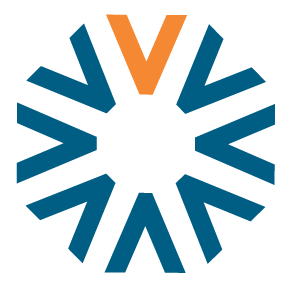Blog
Nursing Home Scheduling: Streamlining Staff Management for Better Care
Tuesday November 12, 2024
Effective staff scheduling is a major challenge in nursing homes, where the quality of care depends on having the right team available at all times. Nursing homes operate in a unique environment, one that combines complex staffing regulations, varying skill requirements, and unpredictable staffing demands. Traditional scheduling methods often fall short in this setting, as manual scheduling systems can be time-consuming, prone to errors, and unable to respond quickly to sudden changes.
This blog explores the scheduling challenges nursing homes and long-term care organizations face and how specialized scheduling software can help address them.
Key Challenges of Scheduling in Nursing Homes
Nursing homes face unique staffing challenges due to the nature of their work and the populations they serve. Here are some of the primary issues:
High Staff Turnover and Absenteeism
Employee turnover and absenteeism rates are high in nursing homes due to the physical and emotional demands of the work. The field is prone to burnout, with long hours, understaffing, and a high level of responsibility that can lead to employees needing time off unexpectedly. In fact, according to a Gahndi 2021, the turnover rate for nursing assistants in nursing homes has been estimated at 94%, and for registered nurses, it’s around 50% annually. High turnover disrupts continuity of care, impacts resident satisfaction, and increases the need for constant shift filling, which is costly and time-consuming. Frequent turnover and absenteeism make it difficult to maintain a stable workforce, and scheduling staff to cover unexpected absences is often a continuous struggle.
Regulatory Compliance
Nursing homes must adhere to specific regulations, which include maintaining a minimum staff-to-resident ratio. This often means having a certain number of Licensed Practical Nurses (LPNs), Certified Nursing Assistants (CNAs), and Registered Nurses (RNs) on duty at all times. Ensuring compliance can be a daunting task when managing schedules manually, as it requires frequent checks and balances to meet mandated ratios and skill requirements.
Skill-Based and Role-Based Scheduling
In a nursing home, it’s essential to assign the right mix of skills to each shift. For instance, CNAs are responsible for direct patient care and assistance with daily activities, while RNs and LPNs are responsible for medical tasks that require specific qualifications. According to a study by the Paraprofessional Healthcare Institute (PHI), about 83% of all nursing home staff are direct care workers, including CNAs who provide essential day-to-day resident care. Licensed nurses, such as RNs and LPNs, make up a smaller percentage but are essential for advanced medical care (PHI, 2022). Ensuring a proper mix of skills on every shift is crucial for patient care and regulatory compliance. Ensuring each shift is adequately staffed with the right skill levels is essential for providing safe, effective care.
Unpredictable Demand
The level of care residents require can fluctuate, adding to the complexity of scheduling. Nursing homes may experience sudden surges in resident care needs due to health crises or seasonal illnesses. Responding to these changes with an adaptable scheduling solution is crucial to maintaining quality care.
These challenges make it clear that nursing home scheduling requires a solution that is responsive, efficient, and tailored to the healthcare environment.
How Scheduling Software Can Support Nursing Home Staffing
In the demanding and highly regulated environment of nursing homes, efficient and accurate staffing is critical to maintaining high standards of resident care. Scheduling software tailored to these settings, like that offered by Vocantas, provides essential tools to manage staffing complexity, regulatory compliance, union requirements, and real-time workforce adjustments, helping administrators optimize resources and improve employee satisfaction.
Intelligent Workflows for Unionized Environments
Nursing homes with unionized staff often face unique scheduling challenges, as they must adhere to complex union rules regarding shift assignments, seniority, overtime limits, and break requirements. Vocantas’ intelligent workflow solution simplifies these challenges by automating the scheduling process in accordance with union guidelines. The software can be customized to respect union agreements and ensure compliance, reducing the administrative burden on nursing home managers and promoting fair, transparent shift assignments. This feature reduces the risk of grievances and improves employee satisfaction by ensuring that scheduling respects established agreements.
Automated Shift Filling
When a staff member calls in sick or becomes unavailable last minute, Vocantas’ Automated Shift Filling solution steps in to manage the process quickly and efficiently. By using intelligent shift-filling technology tailored to the organization’s specific rules and union agreements, the system can notify qualified staff of open shifts via text, email, or mobile app in real-time. Staff can then bid on shifts directly, ensuring that only eligible employees are offered the opportunity. This automation reduces the time and effort required to fill shifts, minimizes operational disruption, and maintains continuity of care.
Compliance with Staffing Regulations
Nursing homes must meet specific regulatory requirements, including staff-to-patient ratios and qualifications for various shifts. Scheduling software helps ensure compliance by tracking these requirements and alerting administrators when a shift may not meet the necessary standards.
Self-Scheduling for Increased Employee Satisfaction
Self-scheduling options can significantly impact employee satisfaction and retention. With scheduling software, nursing home staff can have greater control over their schedules by indicating availability, picking up shifts that fit their preferences, or swapping shifts with approved colleagues. This flexibility reduces the likelihood of burnout, fosters a more supportive work environment, and gives employees more agency in managing their work-life balance, all of which can contribute to higher job satisfaction.
Real-Time Absence and Overtime Management
Managing absences and overtime is crucial to staying within budget and preventing staff burnout. Vocantas’ real-time attendance tracking solution provides immediate updates on absences, allowing managers to make swift adjustments and reassign staff as needed. By automating absence tracking, the software can help prevent excessive overtime costs and avoids overburdening staff, supporting a balanced workload and a sustainable work environment. With real-time visibility, nursing home administrators can make data-driven decisions to ensure that staffing levels align with operational and regulatory needs.
Integration with Payroll, HR, and Other Systems
Effective scheduling requires seamless integration with other core systems, such as payroll and HR, to ensure accurate tracking of employee hours, time-off requests, and overtime. Vocantas’ scheduling software integrates with payroll and HR systems, enabling automatic data flow between platforms. This integration reduces administrative workloads, minimizes data entry errors, and ensures that employee hours are recorded accurately for payroll processing. Additionally, by linking with Vocantas’ intelligent shift-filling solution, nursing homes can maintain data consistency across platforms, allowing administrators to efficiently meet staffing needs while ensuring that records are complete, accurate, and compliant with union and regulatory requirements.
Conclusion
The staffing challenges faced by nursing homes are both unique and complex, but they don’t have to be overwhelming. With the right scheduling software, nursing home administrators can automate labor-intensive processes, manage regulatory and union requirements with ease, and ensure a balanced, skilled staff for every shift. Vocantas’ scheduling platform enables automated shift filling, predictive analytics, and real-time absence management, allowing nursing homes to maintain continuity of care even amid staffing changes. This technology empowers employees to actively participate in scheduling, enhances regulatory compliance, and enables administrators to focus on delivering high-quality resident care in a sustainable, efficient, and union-compliant manner.
Stay Connected!
Subscribe to our newsletter and receive all our news and updates.
Blog
Check out our
latest Blog Posts
Cutting-edge technologies, industry trends and best
practices workforce management.

Wednesday January 29, 2025
Optimizing Workforce Efficiency with Integrated Manufacturing Scheduling Software
The manufacturing industry operates on precision and efficiency. From raw material sourcing to final product assembly, every second counts. Yet,….

Wednesday January 15, 2025
Top 5 Nursing Home Software Solutions to Invest in for Efficient Operations
As staffing shortages and external factors continue to impact the healthcare industry, nursing homes face increasing pressure to provide high-quality….

Thursday December 19, 2024
Absence Management Guide: Tools to Maximize Workplace Efficiency
Managing employee absences effectively is a cornerstone of organizational success. A well-implemented absence management system not only ensures accurate payroll….




